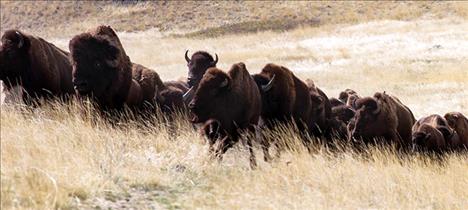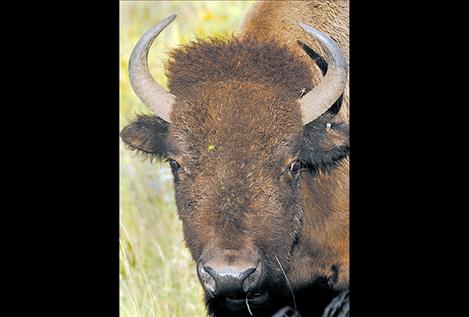Bison range management changes course
Hey savvy news reader! Thanks for choosing local.
You are now reading
1 of 3 free articles.
MOIESE – Decisions concerning management at the National Bison Range changed course last week around April 12. Legislation was drafted to allow the Confederated Salish and Kootenai Tribes to manage the range, but U.S. Secretary of the Interior Ryan Zinke struck down the plan last week. Zinke said he took a “hard look” at a proposal to transfer Bison Range managment from the U.S. Fish and Wildlife Service to CSKT after he took office in March and decided against it. If the plan had gone through, the federal government would hold the range in trust for CSKT to manage. “As Secretary, my job is to look 100 years forward at all of Interior’s resources,” he stated. “I recognize the Bison Range is a critical part of our past, present, and future, which is why I have changed course.” CSKT Attorney Brian Upton spoke at an open meeting in September of 2016 designed to collect public comment to help draft the proposed legislation. He said the project originally started after the U.S. Fish and Wildlife Service, an agency within the U.S. Department of the Interior, asked if the tribe would be interested in managing the range. CSKT tribal council said they were. The decision however, falls to the Interior Secretary. Zinke stated in a press release that he is against the transfer of public lands, which is his primary reason for changing course on the project. “I remain steadfast in that commitment,” he said. The U.S Fish and Wildlife Service will continue to manage the range, although the tribe was asked to be involved. “The Confederated Salish and Kootenai Tribes will play a pivotal role in our discussions about the best path forward,” Zinke stated. “CSKT will be instrumental in helping make this significant place a true reflection of our cultural heritage.” Before he released his statement, Zinke contacted CSKT Chairman Vernon Finley to explain to him that the Interior Department, through the U.S. Fish and Wildlife Service, changed their plans for range management. The tribe responded to the change in direction with a statement saying they plan to stay involved. “Our stewardship interests there remain, and I look forward to continued discussions with Secretary Zinke and the U.S. Fish and Wildlife Service regarding tribal management,” Chairman Finley stated. “The National Bison Range is located in the heart of the Flathead Indian Reservation and will always be a central part of the conservation areas managed by the Tribes’ nationally-recognized Natural Resources Department.” According to a press release, the tribe remains optimistic about future management agreements. “(We have) worked hard for decades to participate in management at the Bison Range and are excited to work with the Secretary and fellow Montanans, committed to the hard work and transparency it has exhibited in working to enhance the Bison Range, which holds unique cultural significance to tribal membership, whether it’s through restoration legislation or a management agreement.” Zinke’s office states the tribe has worked towards an annual funding agreement that would allow the them to participate in management at the range. “Twenty years of negotiation for an Annual Funding Agreement with CSKT was met with mixed success due to litigation, personnel management issues, and differences in expectations regarding how the agreement should be crafted.” In January of 2016, the FWS decided to support the legislative transfer of the range to tribal management due to issues with the funding agreement negotiations. The tribe began drafting a proposal to transfer the range soon after getting the go ahead. The draft legislation was released in June of 2016 that would transfer management of the range from FWS to be held in trust by the Bureau of Indian Affairs for CSKT. “FWS supplied technical drafting assistance to Senator Jon Tester on the initial idea of a legislative transfer, but did not formally offer comment or directly engage on the bill crafted by CSKT,” Zinke’s document states. It wasn’t until January of 2017 that a Notice of Intent concerning the conservation plan for management was placed in the Federal Register. And Zinke reviewed the plan. Zinke’s office also released background information on the range calling the 18,800-acre range the last intact publicly-owned intermountain native grasslands in the United States.

















